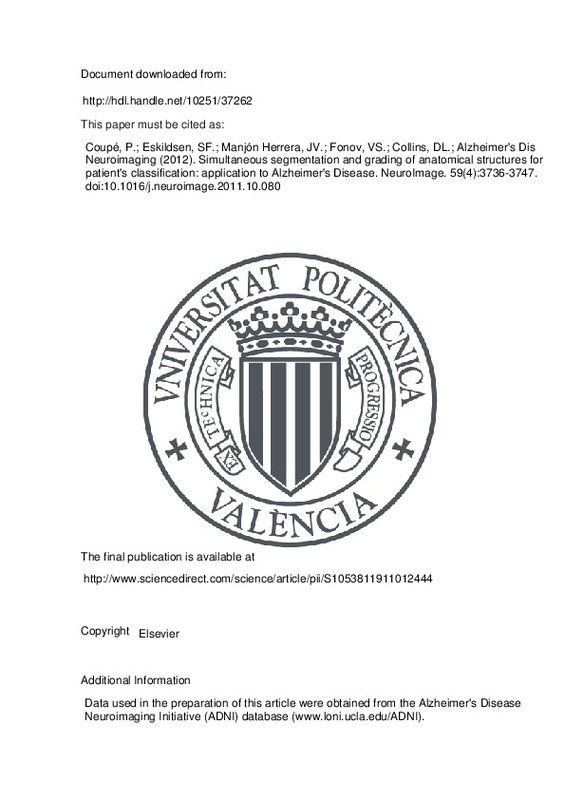JavaScript is disabled for your browser. Some features of this site may not work without it.
Buscar en RiuNet
Listar
Mi cuenta
Estadísticas
Ayuda RiuNet
Admin. UPV
Simultaneous segmentation and grading of anatomical structures for patient's classification: application to Alzheimer's Disease
Mostrar el registro completo del ítem
Coupé, P.; Eskildsen, SF.; Manjón Herrera, JV.; Fonov, VS.; Collins, DL.; Alzheimer's Dis Neuroimaging (2012). Simultaneous segmentation and grading of anatomical structures for patient's classification: application to Alzheimer's Disease. NeuroImage. 59(4):3736-3747. https://doi.org/10.1016/j.neuroimage.2011.10.080
Por favor, use este identificador para citar o enlazar este ítem: http://hdl.handle.net/10251/37262
Ficheros en el ítem
Metadatos del ítem
| Título: | Simultaneous segmentation and grading of anatomical structures for patient's classification: application to Alzheimer's Disease | |
| Autor: | Coupé, Pierrick Eskildsen, Simon F. Fonov, Vladimir S. Collins, D. Louis Alzheimer's Dis Neuroimaging | |
| Entidad UPV: |
|
|
| Fecha difusión: |
|
|
| Resumen: |
In this paper, we propose an innovative approach to robustly and accurately detect Alzheimer's disease (AD) based on the distinction of specific atrophic patterns of anatomical structures such as hippocampus (HC) and ...[+]
|
|
| Palabras clave: |
|
|
| Derechos de uso: | Reserva de todos los derechos | |
| Fuente: |
|
|
| DOI: |
|
|
| Editorial: |
|
|
| Versión del editor: | http://www.sciencedirect.com/science/article/pii/S1053811911012444 | |
| Código del Proyecto: |
|
|
| Descripción: |
|
|
| Agradecimientos: |
Data collection and sharing for this project were funded by the Alzheimer's Disease Neuroimaging Initiative (ADNI) (National Institutes of Health Grant U01 AG024904). ADNI is funded by the National Insti- tute on Aging, ...[+]
|
|
| Tipo: |
|







![[Cerrado]](/themes/UPV/images/candado.png)


